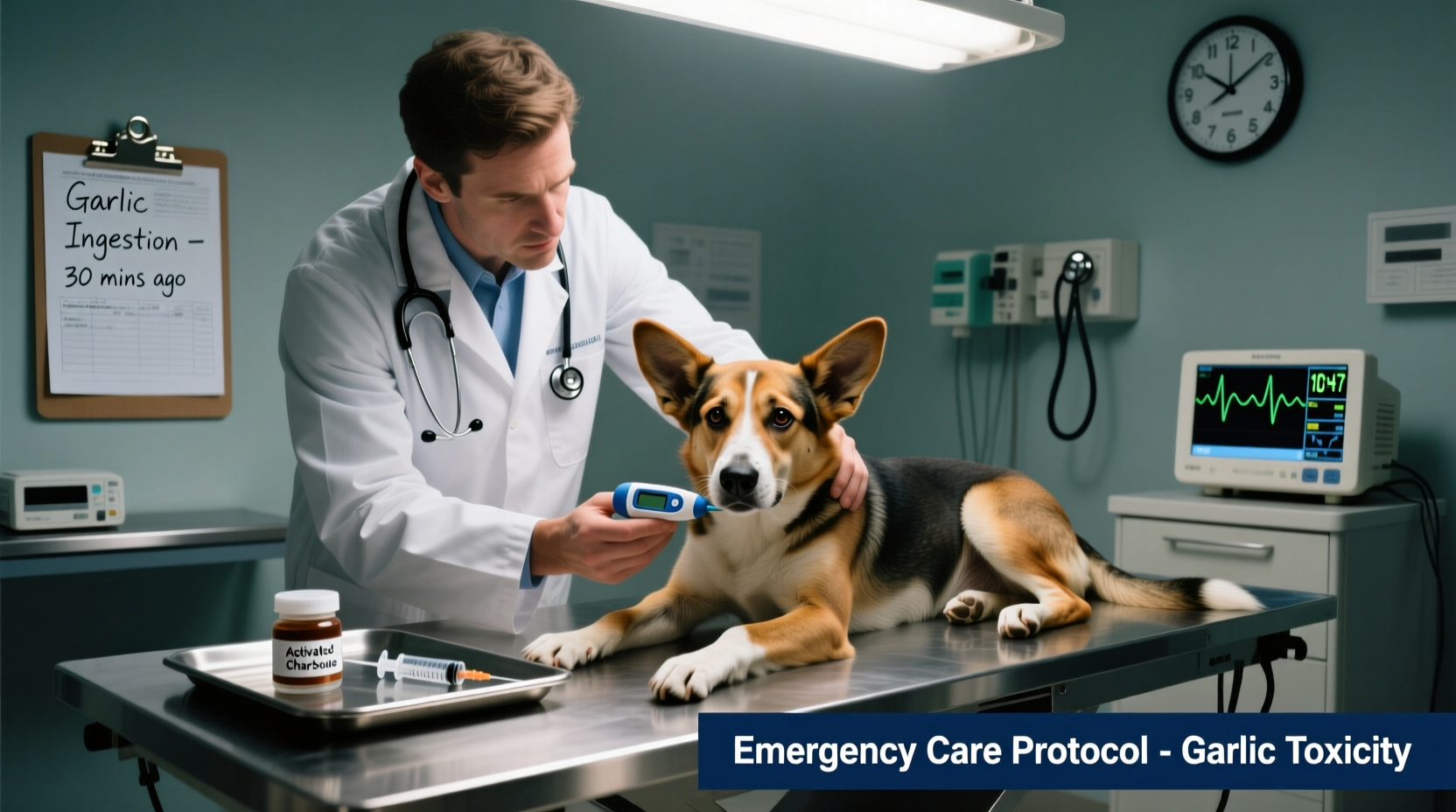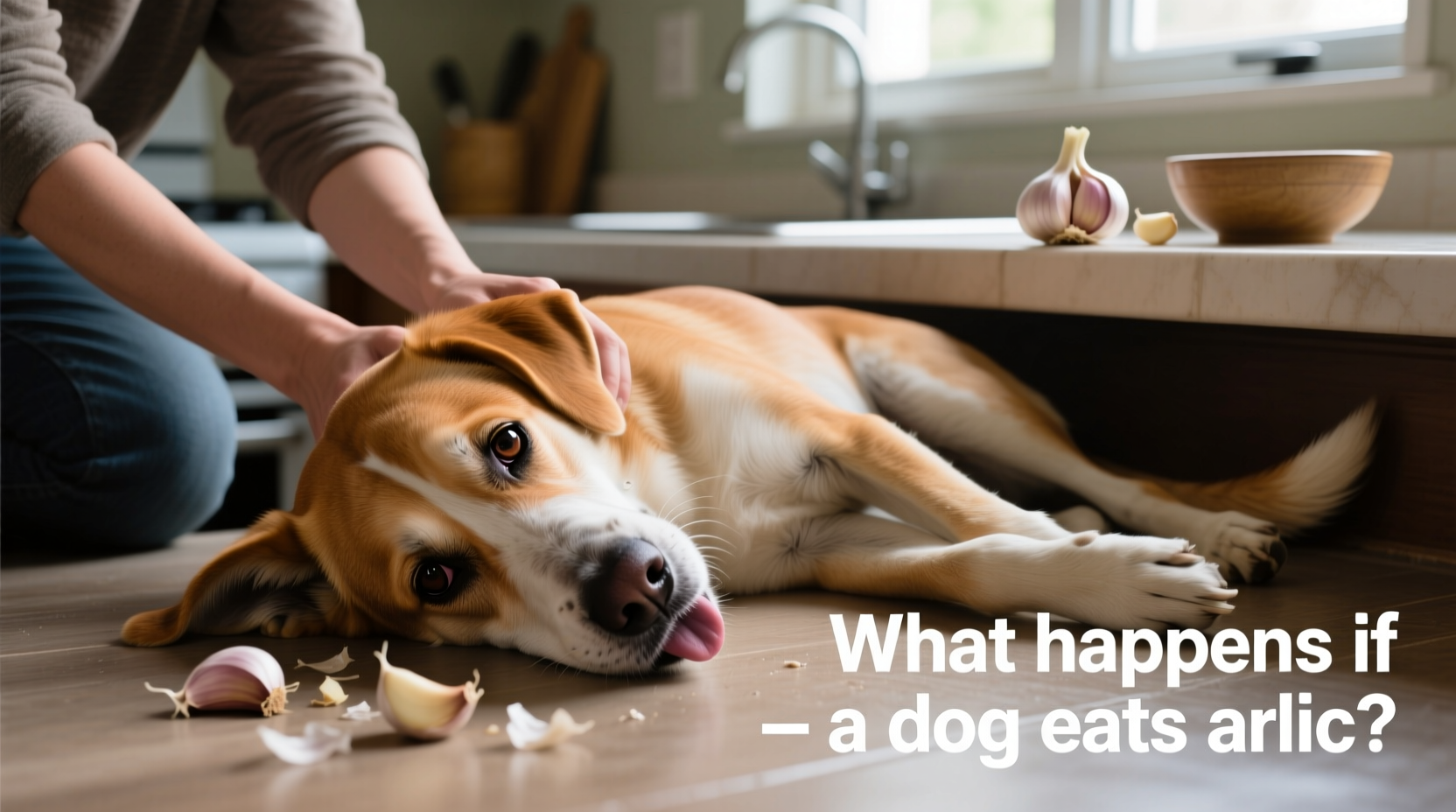Why Garlic Poses Serious Danger to Dogs
Garlic belongs to the Allium family, which includes onions, leeks, and chives - all toxic to dogs. Unlike humans, dogs lack the enzyme necessary to metabolize N-propyl disulfide and thiosulfates found in garlic. These compounds cause oxidative damage to red blood cells, leading to hemolytic anemia where the body destroys its own blood cells faster than it can replace them.
Many pet owners mistakenly believe garlic offers health benefits for dogs, including flea prevention or immune support. This is dangerously incorrect. The American Society for the Prevention of Cruelty to Animals (ASPCA) Animal Poison Control Center confirms garlic has no safe therapeutic dose for dogs and consistently ranks among the top 10 pet toxins reported annually.

Symptom Timeline: What to Watch For
Garlic toxicity symptoms don't appear immediately, creating false reassurance. Understanding this progression helps you recognize danger signs:
| Time After Ingestion | Early Warning Signs | Action Required |
|---|---|---|
| 0-12 hours | Vomiting, diarrhea, abdominal pain | Contact vet immediately |
| 12-24 hours | Loss of appetite, lethargy | Monitor closely; prepare for vet visit |
| 24-72 hours | Pale gums, rapid breathing, weakness, dark urine | Emergency veterinary care needed |
| 72+ hours | Severe anemia, collapse, organ damage | Critical emergency; survival depends on treatment |
How Much Garlic Actually Harms Dogs?
The toxic threshold varies by dog size and health status. According to the ASPCA Animal Poison Control Center, the minimum toxic dose is approximately 15-30 grams of garlic per kilogram of body weight. However, smaller amounts consumed repeatedly can cause cumulative toxicity.
Consider these real-world equivalents:
- A single clove of garlic (3-7g) could harm a small dog (under 15 lbs)
- Garlic powder is 5-10 times more concentrated than fresh garlic
- Garlic in broth or cooked dishes remains equally toxic
- Puppies and Japanese breeds (like Shiba Inus) face higher risk
What Happens at the Veterinary Clinic
When you arrive at the clinic, the veterinary team will follow this evidence-based protocol:
- Assessment: They'll determine how much garlic was consumed and when, plus your dog's current symptoms
- Decontamination: If ingestion occurred within 2 hours, they may induce vomiting or administer activated charcoal
- Blood tests: Complete blood count (CBC) checks for Heinz bodies and anemia severity
- Supportive care: IV fluids, oxygen therapy, and in severe cases, blood transfusions
- Monitoring: 48-72 hour observation for delayed anemia development
The Pet Poison Helpline reports that dogs receiving treatment within 8 hours have significantly better outcomes. Most dogs recover fully with prompt intervention, but untreated cases can lead to fatal complications.
Preventing Future Garlic Exposure
Protect your dog with these practical steps:
- Store garlic, onions, and related foods in sealed containers out of reach
- Never share human food containing garlic or onion powder
- Check pet food ingredients for hidden allium derivatives
- Inform all household members about this danger
- Avoid "natural" flea remedies containing garlic
Remember that garlic toxicity isn't limited to fresh cloves. Garlic powder, garlic salt, and even foods cooked with garlic pose equal risks. The Merck Veterinary Manual confirms that processed garlic forms maintain their toxic properties through cooking and drying.
Common Misconceptions About Garlic and Dogs
Several dangerous myths persist in pet communities:
- "Small amounts are safe" - No safe threshold exists; cumulative exposure causes damage
- "Cooking removes toxicity" - Heat doesn't destroy thiosulfates
- "Garlic prevents fleas" - No scientific evidence supports this; risks outweigh unproven benefits
- "My dog ate garlic before with no issues" - Delayed symptoms may not have been recognized
Frequently Asked Questions
How soon after eating garlic do dogs show symptoms?
Symptoms typically appear 24-72 hours after ingestion. Initial signs include vomiting and diarrhea within 12 hours, followed by more serious anemia symptoms like pale gums and weakness. Never wait for symptoms to appear before contacting your veterinarian.
Can a small amount of garlic kill a dog?
Yes, even small amounts can be fatal, especially for small breeds. A single clove can poison a toy breed dog. The toxic dose is approximately 15-30 grams per kilogram of body weight, but repeated small exposures cause cumulative damage that may prove fatal without treatment.
What's the difference between garlic and onion toxicity in dogs?
Garlic is approximately 5 times more toxic than onions to dogs. Both contain thiosulfates that cause hemolytic anemia, but garlic's higher concentration of disulfides makes it significantly more dangerous. Garlic powder poses even greater risk as it's more concentrated than fresh garlic.
Should I induce vomiting if my dog ate garlic?
Never induce vomiting without veterinary guidance. Improper induction can cause additional complications. Contact your veterinarian or animal poison control immediately for specific instructions based on when and how much garlic was consumed.











 浙公网安备
33010002000092号
浙公网安备
33010002000092号 浙B2-20120091-4
浙B2-20120091-4